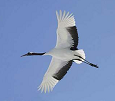| |
 |
韓國 航空組織 發展을 위한 實證的 硏究 = (An) empirical study for the
development of aviation organizations in Korea
| | |
| |
Recently, worldwide
air service industry is at the turning point toward new structure and
organizations that are characterized by liberalization and open door, and the
aviation industry in the country has adapted to environmental changes resulting
from large and hub-oriented airports in neighbor countries such as China and
Japan.
The essentials are the roles of the government as well as that of
air-liners who are responsible for air transportation and safety to deal with
the environmental changes positively. So, this study is to find whether the
aviation organizations of Korea with air transportation being separated from
safety is suited to the global trend and what is the problem of such a
structure, via a questionnaire survey with a group of aviation specialists.
As a result of the questionnaire, aviation experts suggested, first, a
necessity of integrating air transportation and safety policy to the extent that
the separation of air transportation and safety causes ineffective air business.
Second, they proposed the ineffectiveness of operation. Also, it was raised
consolidation of some organizations with unclear responsibility because of their
overlapping jobs. Third, they pointed out the lack of training system for
workers in aviation business. Unreasonable training system relying on foreign
training organizations and unified training without well-established training
equipment and facilities for air workers. Fourth, they questioned whether Korea
can do international business as it is without a section charged with
international cooperation, although the country is a member of
ICAO(International Civil Aviation Organization).
As improvement plans for
the four issues stated above, government agencies proposed alternative plans
based on minimized regulations from the government, reasonable system for
guidance and supervision, independent and specialized organizations, consistent
policy for both air transportation and safety, and small governments.
Thus,
it is suggested two alternatives: 1) reorganization of the current Civil
Aviation Safety Authority to Civil Aviation Administration, as in the U.S.
Federal Aviation Administration, 2) shift of Civil Aviation Safety Authority to
Aviation Policy Division under the Ministry of Construction and Transportation.
For reorganization plan to Civil Aviation Administration, there remains
governments' responsibility for control operations and ambiguous limits to
responsibility between government agencies and Korea Aviation Corporation.
Whereas, for Aviation Policy Division plan framed with the current system, it
makes most suitable alternative plans because it is judged to be against the
government policies seeking a slim structure.
The optimum alternative plans
include reorganizing to Aviation Policy Division under the Ministry of
Construction & Transportation with some function of the current CASA
enhanced, strengthening its guidance & supervision on policy-making and
safety, commissioning Korea Aviation Corporation to replace local aviation
administration. In this case, it is essential to divide in the roles of the
government and the aviation corporation. However, if it operates the
organization in consideration of the government guidance & supervision
system, it will reach the natural solutions, such as consistent aviation policy,
slim structure, and effective training on workers.
This study has a
limitation that did not address some of aviation industry such as airplane
manufacture, although the industry has a great influences on other industries
and has a potential to raise technical and technological competence as a
composite industry. So, it is expected that further studies will be done on the
need of the government-aviation organizations integrating aviation
transportation and industries. |
최근 세계 항공운송산업은 자유화와
개방화로 특징 되어지는 새로운 구조 전환기에 들어서고 있고, 중국, 일본 등 한국의 주변국의 공항의 대형화, 허브화 지향으로 인한 항공분야의
환경변화에 적응하고 있다.
이런 환경 변화에 적극적으로 대처하기 위해서는 항공사 뿐 만 아니라 항공운송과 안전을 책임지고 있는 정부의
역할이 무엇보다 중요하다고 할 수 있다. 그리하여 현재 항공운송과 안전이 분리된 현재 한국의 항공조직이 세계 흐름에 적합한 지, 어떠한 문제점을
가지고 있는지에 대하여 항공 전문가 그룹에 대한 설문조사를 통하여 연구하였다.
설문조사 결과 항공전문가들은 항공운송과 안전 정책이
분리되어 효율적으로 항공업무를 수행할 수 없다는 점에 통합의 필요성을 제기하였으며, 둘째로 조직 운영의 비효율성이다. 조직을 설립하면서 업무가
중복되어 책임한계가 불명확하여 일부 조직의 통합도 제기되었다. 세 번째는 항공업무에 종사하는 사람들에 대한 교육훈련 시스템의 부제를 지적하였다.
항공종사자를 위한 제대로 된 교육시설 없이, 획일적인 교육이고 외국교육 기관에 의존하는 비합리적인 교육체제 네 번째는 한국이 ICAO
이사국이면서도 국제협력을 전담할 수 있는 과(課) 조차 없이 제대로 국제업무를 할 수 있는지에 대한 문제점을 지적하였다.
위에서 제기된 네
가지의 문제점에 대한 개선 방안으로 정부 조직은 규제를 최소화하고 합리적인 지도감독체제, 조직의 독립성과 전문성, 항공운송과 안전 정책의 일치
및 효율적이고 작은 정부를 검토의 기본방향으로 정하여 대안을 제시하였다.
그 결과 현재의 항공안전본부를 미연방항공청의 경우처럼 항공청으로
개편하는 방안과 항공안전본부를 건설교통부 항공정책실로 변경하는 두 가지 방안을 각각 제시하였으나, 항공청으로 갈 경우 관제업무를 계속해서 정부가
수행 하여야 하는 부담과 정부와 공항공사 등과의 불명확한 책임 한계 등이 있었으며, 현 체제를 유지하고 항공정책실로 갈 경우 조직의 슬림화를
추구하는 정부의 시책에 역행하는 것으로 판단하여 최적 대안을 제시하였다.
최적대안에는 현재의 항공안전본부의 일부 기능을 강화하여
건설교통부에 항공정책실로 개편하여 정책 수립 및 안전에 대한 지도·감독업무를 강화하고, 지방항공청에서 수행하는 업무는 공항공사에 위탁하는 형태로
재편하는 것이다. 이 경우 정부와 공항을 운영하는 두 공항공사와의 역할 분담이 무엇보다 중요하고, 정부의 지도 감독체제를 어떻게 할 것인가를
심사숙고하여 조직을 운영한다면 항공정책의 일관성, 조직의 슬림화, 종사자 교육 문제 등을 자연스럽게 해결 할 수 있을 것이다.
비록 이번
연구에서는 다루지 못했지만 항공기 제작 등의 항공산업은 타 산업에 대한 기술파급효과가 크고 기술능력을 제고할 수 있는 종합산업으로 좀더 깊은
연구를 통하여 항공운송과 산업분야를 통합한 정부 항공 조직이 필요할 것으로 판단하며, 이에 대한 연구가 이루어지기를
희망한다. | |
